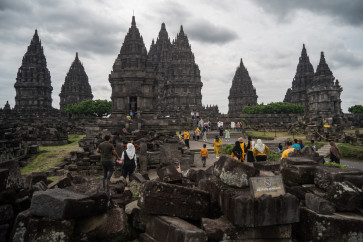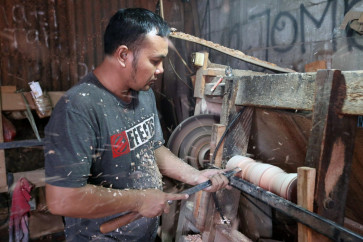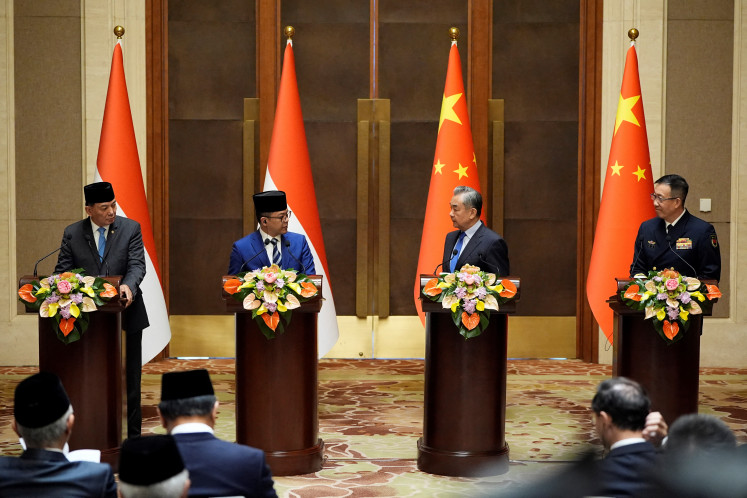Third earthquake in 2018 in Lebak: Is Jakarta ready for megathrust quake?
Lebak, Banten, was rocked by its third earthquake of the year on July 7. Even though it was smaller than the ones that occurred on Jan. 23 (6.1-magnitude) and in March (5.2-magnitude), the 4.4-magnitude earthquake damaged three houses in Sukabumi, West Java.
Change text size
Gift Premium Articles
to Anyone
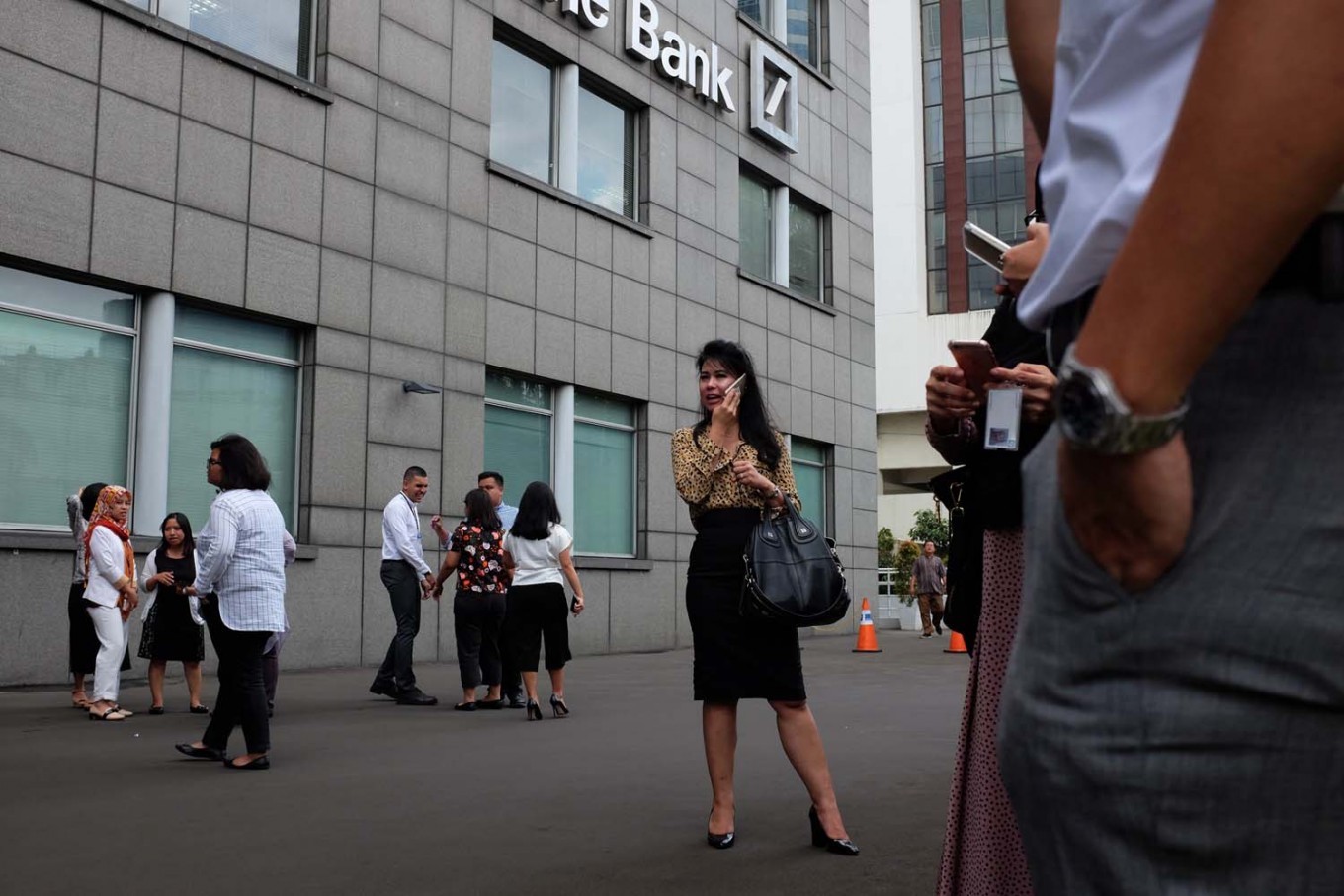 Lebak is 153 kilometers away from Jakarta but the tremor in January was felt in the metropolis, sending those working in high-rise buildings into a panic. (JP/Jerry Adiguna)
Lebak is 153 kilometers away from Jakarta but the tremor in January was felt in the metropolis, sending those working in high-rise buildings into a panic. (JP/Jerry Adiguna)
L
ebak, Banten, was rocked by its third earthquake of the year on July 7. Even though it was smaller than the ones that occurred on Jan. 23 (6.4-magnitude) and in March (5.2-magnitude), the 4.4-magnitude earthquake damaged three houses in Sukabumi, West Java.
Lebak is 153 kilometers away from Jakarta but the tremor in January was felt in the metropolis, sending those working in high-rise buildings into a panic. The 5.2-magnitude quake that happened in March was hardly felt by many.
The Lebak earthquakes prompted experts to hold a seminar in late February in Jakarta titled 8.7 Magnitude Megathrust Earthquake – Is Jakarta Ready? The Meteorology, Climatology and Geophysics Agency (BMKG) presented a paper at the seminar that talked about Jakarta’s vulnerability to earthquakes as the city is surrounded by active fault lines.
An inspection on high-rise buildings across the city began in March to ensure readiness in case another, bigger earthquake hits. The city has over 800 high-rise buildings.
What is a megathrust earthquake?
Megathrust earthquakes happen in megathrust zones, where the edges of two tectonic plates converge, forcing one underneath the other in a process called subduction. Most megathrust earthquakes are small with a moment magnitude scale (M) under 5.0. However, megathrust earthquakes can also be extremely powerful.
The 2004 earthquake that caused a tsunami, devastating Aceh and other countries, was a megathrust earthquake. The quake happened when part of the Indo-Australian Plate was subducted by the Eurasian Plate.
Indonesia is vulnerable to earthquakes. The BMKG revealed that as many as 5,000 quakes happen annually, with 300 quakes with a magnitude greater than 5.0. This is because Indonesia lies on top of two major tectonic plates – the Eurasian and Indo-Australian plates – and several minor plates. It is also surrounded by two oceanic tectonic plates, the Pacific and Philippine Sea plates.
The subduction zone between the Eurasian and Indo-Australian plates is called the Sunda megathrust and stretches from the west of Sumatra to south of Java.
How does this affect Jakarta?
The megathrust center might be far from Jakarta, but if the earthquake is high on the moment magnitude scale, it can be felt in the city.
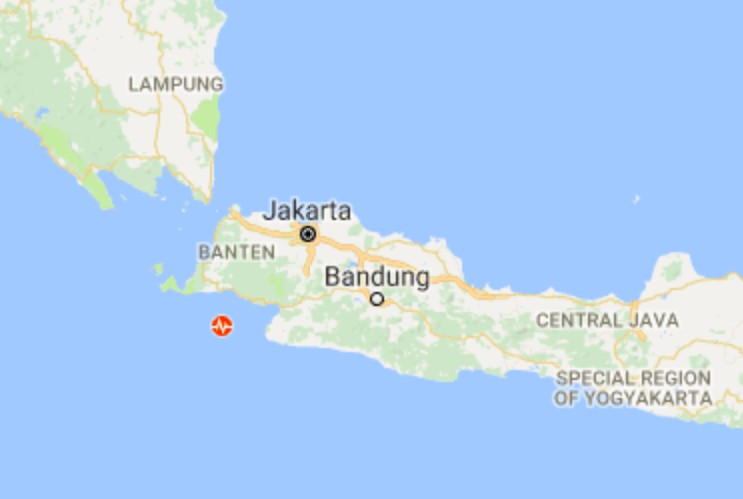
There are two zones that pose as threats – the megathrust zone south of West Java and the megathrust zone south of the Sunda Strait. There are also several active fault lines on Java Island, namely the Lembang fault in West Java, the Baribis fault, which stretches from East Java to West Java, and Cimandiri in Banten and West Java.
Jakarta saw a devastating earthquake in 1699 that lasted for 45 minutes and destroyed 21 houses, 29 barns and claimed at least 28 lives. It was recorded as the strongest earthquake to have ever hit Jakarta, then Batavia.
What is the M 8.7 earthquake?
The M 8.7 earthquake in the BMKG presentation refers to a scenario in a dissertation titled “Interplate Earthquake Potential off Western Java, Indonesia, Based on GPS Data” by Nuraini Rahma Hanifa. A paper titled “Interplate coupling model off the southwestern coast of Java, Indonesia, based on continuous GPS data in 2008-2010” by the author and five other researchers is available online.
The scenario is based on the assumption that a lack of megathrust earthquakes with a magnitude greater than 5.0 in the last 300 years in southern Java might indicate that a devastating quake is inevitable. The tectonic plates between Ujung Kulon in Banten and Pelabuhan Ratu in West Java might be interlocked and, thus, they are building pressure, which, when released, would result in an 8.7 magnitude earthquake.
The paper actually mentions another possibility, in which the movement between two plates happens slowly without causing great earthquakes, citing cases in Boso Peninsula, Japan, and Guerrero, Mexico.
Is Jakarta under threat?
Jakarta is located in the northern part of Java Island, which has a surface that is made up of thick but soft soil, not bedrock. The soil composition can amplify shocks during earthquakes, which explains why earthquakes with an epicenter in faraway places like Lebak can be felt in Jakarta.
Questions about the structural integrity of Jakarta’s buildings during disaster situations also adds to the concerns. Scientists have been urging the central government and Jakarta to intensify efforts to mitigate the effects of earthquakes by inspecting buildings, allocating funds for research and opening access to data for such studies.
Furthermore, January’s earthquake shows that most people do not know what to do during an earthquake, which can prove fatal, especially if a major quake strikes.

